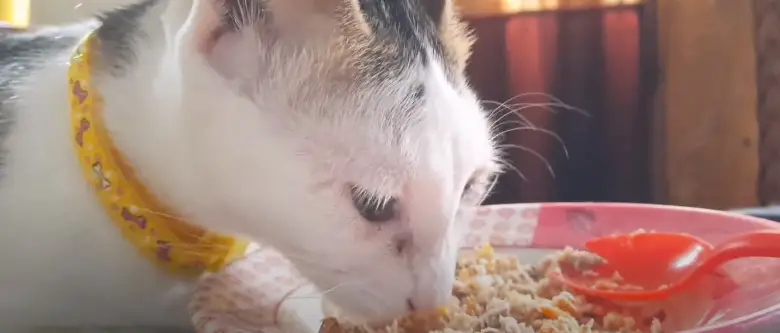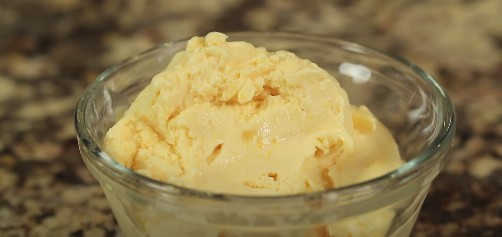Kidney disease is a prevalent concern among feline companions, and proper nutrition plays a pivotal role in managing their overall health.
One increasingly popular approach is preparing homemade cat food, which allows for a customized diet tailored to the specific needs of cats with kidney disease.
What is Kidney Disease in Cats
Cats’ kidneys are vital organs responsible for filtering waste and regulating fluids. Kidney disease can emerge silently, often leading to symptoms like increased thirst, weight loss, decreased appetite, and changes in behavior.
Given the role of nutrition in supporting kidney function, dietary adjustments are crucial in slowing down the progression of the disease.
Benefits of Homemade Cat Food
Opting for homemade cat food provides cat owners with a unique opportunity to exert control over the ingredients that constitute their pets’ diets.
This control allows for a diet that addresses individual cats’ needs, ultimately enhancing their quality of life. Additionally, homemade cat food can potentially be more cost-effective when compared to commercial prescription diets.

Consultation with a Veterinarian
It cannot be stressed enough that consulting with a veterinarian is an integral part of designing a homemade diet for cats with kidney disease.
Veterinarians possess the expertise required to assess the unique condition of a cat, enabling them to guide the creation of a diet plan that is both appropriate and effective.
Essential Nutritional Considerations
Balanced nutrition is paramount. Cats with kidney disease require specific attention to their protein and phosphorus intake. While protein remains a necessary component, it should be of high quality and limited in quantity.
Phosphorus, often restricted in these cases, necessitates careful selection of ingredients to maintain optimal levels.
Adequate hydration is equally vital, with wet food being a preferred choice to promote water consumption.
Also Read: Why My Cat is Obsessed With Food?
Safe and Nutritious Ingredients
When crafting homemade cat food for kidney disease, ingredients must be chosen wisely. Lean protein sources such as chicken, turkey, and fish are excellent options.
These proteins provide essential amino acids while minimizing the workload on the kidneys. Low-phosphorus vegetables and fruits, like carrots and green beans, offer additional nutrients without overwhelming phosphorus content.
Healthy fats from sources like fish oil contribute to overall well-being.
Homemade Cat Food Recipes

1. Low-Phosphorus Chicken and Rice Blend
When it comes to catering to the dietary needs of cats with kidney disease, crafting meals that are both nourishing and kidney-friendly is paramount.
The following recipe offers a simple yet effective solution: a low-phosphorus chicken and rice blend.
Ingredients:
- 1 cup lean chicken (cooked and shredded)
- 1/4 cup cooked white rice
- 1 teaspoon fish oil (for omega-3 fatty acids)
- 1/4 teaspoon calcium supplement (to maintain calcium-phosphorus balance)
- Water (as needed for consistency)
Instructions:
- Begin by cooking the lean chicken thoroughly. You can boil, bake, or use any method that ensures the chicken is fully cooked and free from any pinkness.
- Once cooked, shred the chicken into small, bite-sized pieces. This not only aids in digestion but also makes it easier for cats to consume.
- In a separate pot, cook the white rice according to the package instructions. Ensure that the rice is well-cooked and soft.
- Allow both the chicken and rice to cool before proceeding.
- In a mixing bowl, combine the shredded chicken and cooked white rice. Mix them together evenly.
- Gradually add fish oil to the mixture. Fish oil provides essential omega-3 fatty acids that contribute to overall health and can be particularly beneficial for cats with kidney disease.
- For calcium balance, sprinkle the recommended amount of calcium supplement into the mixture and blend thoroughly.
- If needed, add a small amount of water to achieve the desired consistency. This will help ensure your cat remains hydrated.
- Once everything is mixed well, the low-phosphorus chicken and rice blend is ready to serve.
Feeding Instructions: Serve an appropriate portion size for your cat’s size and weight. Monitor your cat’s response to the new meal, and make any necessary adjustments as recommended by your veterinarian.
Remember to consult your vet before making significant changes to your cat’s diet, especially if they have kidney disease.
Creating homemade cat food allows you to provide a diet tailored to your cat’s specific needs. This low-phosphorus chicken and rice blend offers a balanced and nourishing option that supports your cat’s overall well-being, especially during their kidney disease journey.
Remember that this recipe is just a starting point. It’s essential to work closely with your veterinarian to develop a comprehensive diet plan that meets your cat’s individual requirements.
2. Turkey and Vegetable Stew for Kidney Support
Caring for a cat with kidney disease requires thoughtful dietary choices. This turkey and vegetable stew is a wholesome and kidney-friendly option that aims to provide the nourishment your feline companion needs.
Ingredients:
- 1/2 cup lean ground turkey (cooked)
- 1/4 cup low-phosphorus vegetables (e.g., carrots, green beans), finely chopped and cooked
- 1 tablespoon cooked and mashed sweet potato (for added fiber)
- 1/4 teaspoon fish oil (rich in omega-3 fatty acids)
- 1/4 teaspoon calcium supplement (to maintain calcium-phosphorus balance)
- Water (as needed for consistency)
Instructions:
- Start by cooking the lean ground turkey thoroughly. Ensure there is no pinkness in the meat.
- Once cooked, finely chop the low-phosphorus vegetables and cook them until they are tender.
- In a mixing bowl, combine the cooked and mashed sweet potato with the chopped vegetables.
- Add the cooked ground turkey to the mixture and blend all the ingredients evenly.
- Gradually incorporate fish oil into the mixture. Omega-3 fatty acids from fish oil offer numerous health benefits for cats, including supporting kidney health.
- Sprinkle the recommended amount of calcium supplement into the mixture to maintain the proper calcium-phosphorus balance.
- If needed, add a small amount of water to achieve the desired consistency. Adequate hydration is crucial for cats with kidney disease.
- Thoroughly mix all the ingredients to create a balanced turkey and vegetable stew.
Feeding Instructions: Serve an appropriate portion size based on your cat’s size and weight. Observe how your cat responds to the stew, and make any necessary adjustments as advised by your veterinarian.
Always consult your vet before making significant dietary changes, especially for cats with kidney disease.
Homemade cat food offers the advantage of tailored nutrition. This turkey and vegetable stew is designed to provide essential nutrients while considering your cat’s kidney health.
Remember, every cat’s needs are unique, so working closely with your veterinarian is essential to create a comprehensive diet plan that supports your cat’s well-being.
3. Fish and Sweet Potato Medley with Kidney-Friendly Supplements
Crafting homemade cat food tailored to your feline friend’s kidney health can be a rewarding endeavor. This fish and sweet potato medley is a flavorful option packed with essential nutrients and kidney-friendly supplements.
Ingredients:
- 1/4 cup boneless, skinless fish (cooked and flaked, e.g., salmon or mackerel)
- 2 tablespoons cooked and mashed sweet potato (rich in fiber and vitamins)
- 1 tablespoon low-phosphorus vegetables (e.g., peas or zucchini), finely chopped and cooked
- 1/4 teaspoon fish oil (for omega-3 fatty acids)
- 1/4 teaspoon calcium supplement (to maintain calcium-phosphorus balance)
- 1/8 teaspoon powdered phosphorus binder (as recommended by your vet)
- Water (as needed for consistency)
Instructions:
- Begin by cooking the boneless, skinless fish thoroughly. Ensure the fish is fully cooked and free from bones.
- Once cooked, carefully flake the fish into small pieces, making it easier for your cat to consume.
- Cook and mash the sweet potato until it’s smooth and free of lumps.
- Finely chop and cook the low-phosphorus vegetables until they are tender.
- In a mixing bowl, combine the flaked fish, mashed sweet potato, and chopped vegetables.
- Gradually add fish oil to the mixture. Fish oil contributes valuable omega-3 fatty acids that can support kidney health.
- Sprinkle the recommended amount of calcium supplement into the mixture to maintain proper calcium-phosphorus balance.
- Incorporate the powdered phosphorus binder as advised by your veterinarian. This helps regulate phosphorus levels in the diet.
- If necessary, add water to achieve the desired consistency, ensuring your cat remains well-hydrated.
- Thoroughly mix all the ingredients to create a balanced fish and sweet potato medley.
Feeding Instructions: Serve an appropriate portion size based on your cat’s weight and size. Observe your cat’s response to the medley and make any necessary adjustments recommended by your veterinarian.
Always consult your vet before making significant changes to your cat’s diet, especially if they have kidney disease.
Creating homemade cat food provides a tailored approach to nutrition. This fish and sweet potato medley is designed to offer essential nutrients while considering your cat’s kidney health.
Remember, collaborating closely with your veterinarian is essential to develop a comprehensive diet plan that supports your cat’s individual needs.
Food Preparation and Safety
Homemade cat food preparation requires adherence to food safety practices. All ingredients must be cooked thoroughly to eliminate any harmful pathogens. To avoid toxic ingredients, omit foods like onions, garlic, grapes, and raisins from recipes.
Ensuring proper hygiene and storing meals in appropriate containers are pivotal in maintaining the food’s freshness and preventing contamination.
Transitioning to Homemade Food
Transitioning a cat to homemade food should be gradual to allow their digestive system to adapt. Begin by mixing small amounts of homemade food with their current diet, progressively increasing the proportion over several days.
Monitoring the cat’s response is essential, as some cats may require slight adjustments to the diet.
Regular Monitoring and Follow-Up
Routine veterinary check-ups and blood tests are indispensable for tracking a cat’s health. Regular monitoring helps veterinarians assess the effectiveness of the homemade diet and make necessary adjustments.
Collaboration between cat owners and veterinarians ensures that the cat’s well-being is consistently upheld.
Conclusion
Homemade cat food tailored for kidney disease is a testament to the care and dedication cat owners invest in their beloved companions.
By adhering to the guidance of veterinary professionals, thoughtfully selecting appropriate ingredients, and diligently preparing meals, cat owners can significantly enhance their feline friends’ quality of life.
In the realm of cat care, a personalized approach to nutrition is undeniably a step towards optimal health and happiness.
His professional interests include humane education, ethics, small animal behavior, and veterinary. As a pet lover from school life, having grown up with two cats and a dog. If he isn’t spending time with his friends and family, Justin enjoys traveling. Learn more about Justin here.
Find him on: Facebook
Read his latest ARTICLES

